Alternative Cooking Method To Traditional Veal Saltimbocca Recipe
Veal saltimbocca is celebrated as one of Italy’s most cherished culinary creations, offering an elegant and simple dish to prepare. The name “saltimbocca,” translating to “jumps in the mouth,” perfectly captures its irresistible nature.
Traditionally associated with Roman cuisine, it has become a favorite across Italy and beyond. It is adored for its harmonious blend of tender veal, savory prosciutto, earthy sage, and a buttery white wine sauce.
The origins of veal saltimbocca are often debated, but it is believed to have emerged in Italy’s Lazio region. Despite its rich heritage, its straightforward preparation and short cooking time make it accessible even for home cooks looking to elevate their repertoire. Whether served as a sophisticated dinner centerpiece or a comforting meal shared with loved ones, its flavor profile always impresses.
This recipe showcases the classic version of veal saltimbocca while offering helpful tips to ensure every element shines. Each step has been carefully detailed, from achieving the perfect sear on the veal to creating a velvety sauce.
The result is a dish that embodies the warmth and sophistication of Italian cooking, allowing its timeless charm to enhance any dining experience. Let’s explore the recipe and what makes this dish so unique.
History of Saltimbocca
Saltimbocca has a history as rich as its flavor. While its precise origins remain somewhat elusive, the dish is widely believed to have originated in Italy, specifically in the Lazio region, with Rome as its culinary epicenter.
The first known documentation of saltimbocca dates to the 19th century, when Pellegrino Artusi mentioned it in his seminal cookbook La Scienza in Cucina e l’Arte di Mangiar Bene (Science in the Kitchen and the Art of Eating Well), published in 1891. In it, Artusi described the dish as popular in Roman trattorias, emphasizing its simplicity and the complementary flavors of veal, prosciutto, and sage. This description solidified its reputation as a quintessential Roman dish, though its roots might extend further into Italian culinary tradition.
Saltimbocca’s enduring appeal lies in its minimal yet harmonious ingredients. It showcases the Italian philosophy of letting high-quality components shine without excessive complication.
Over time, variations have emerged, including versions made with chicken, pork, or even fish, catering to different tastes and preferences. Despite these adaptations, the classic veal preparation remains the gold standard, celebrated for its authenticity and irresistible charm.
Veal saltimbocca, which probably originated in Brescia (a region of Lombardy in northern Italy), is a specialty in Roman cuisine.
Classic Saltimbocca Preparation
Veal saltimbocca is prepared by layering thin slices of veal with prosciutto and fresh sage, securing them together with toothpicks. The veal is lightly seasoned, though care is taken to avoid over-salting, as the prosciutto provides a natural savoriness.
The prepared cutlets are then dusted with a thin coating of flour, which helps achieve a golden crust and contributes to the sauce’s texture. Butter or olive oil is heated over medium heat in a large skillet, and the veal is seared until the prosciutto crisps slightly and the veal becomes tender and lightly browned. Cooking is done quickly to preserve the delicate texture of the meat.
Once the veal is cooked, it is removed from the pan, and the flavorful fat left behind is used to make the sauce. A splash of dry white wine is added to deglaze the pan, lifting the caramelized bits. This is often followed by a touch of broth or additional butter for richness. The sauce is simmered briefly until it reduces and thickens slightly.
The veal is then returned to the pan to coat in the sauce or plated individually with the sauce drizzled over the top. It is served immediately, accompanied by simple sides like sautéed spinach or roasted potatoes.
I have two problems with this method. First, skewers are always awkward. Secondly, it’s tedious to ensure they are correctly threaded. The skewer must adequately penetrate each ingredient to hold it in place and lay flat so the entire packet cooks uniformly.

My second issue is that sage is dispersed sparingly. The cutlets are more significant than two leaves of sage. This results in a gastronomic mood swing. Some mouthfuls will be devoid of the herb, while others will be inundated.
My solution is first to chop the sage leaves. I stick with the basic formula of two leaves per piece of veal.
My Technique
The veal cutlets should be thoroughly pounded until they are thin and even. They are then seasoned with salt and pepper, with salt used sparingly due to the saltiness of the prosciutto. Sage is sprinkled evenly over the surface of the cutlets. Prosciutto and Fontina cheese are placed on top, after which the cutlets are folded in half and pounded again.
During this second pounding, the folded edge should be given extra attention to ensure it is not noticeably thicker than the rest of the cutlet. This step also seals the edges of the folded cutlets, securing the filling in place.
When pounding meat, always use the smooth side of the mallet and cover the cutlets with plastic wrap. This precaution minimizes the risk of tearing the meat and prevents stray particles from scattering throughout the kitchen.
Veal Saltimbocca Recipe
Ingredients
- 8 fresh sage leaves cut in chiffonade, (as described below)
- 4 veal cutlets
- salt and pepper to taste
- 4 slices prosciutto
- 4 slices Fontina cheese sliced very thin, optional
- 4 tablespoons butter divided
- 4 oz dry white wine
Instructions
- To chiffonade the sage, tightly roll the leaves horizontally into a cigar shape. Then slice it end to end to produce little ribbons.
- Pound the veal cutlets to thin them out and season with salt and pepper.
- Evenly distribute the sage over the cutlets and then top each with a slice of prosciutto and Fontina cheese.
- Fold the cutlets in half and pound them again to a uniform thickness.
- Melt half the butter in a large skillet. Place the veal packets in the pan, brown the first side, flip and repeat. Remove the veal and reserve.
- Add the wine and deglaze the pan, scraping the browned bits off the bottom.
- Add the remaining butter.
- Season with salt and pepper.
- Return the veal to the pan and briefly cook it on each side to coat it with the sauce and serve.

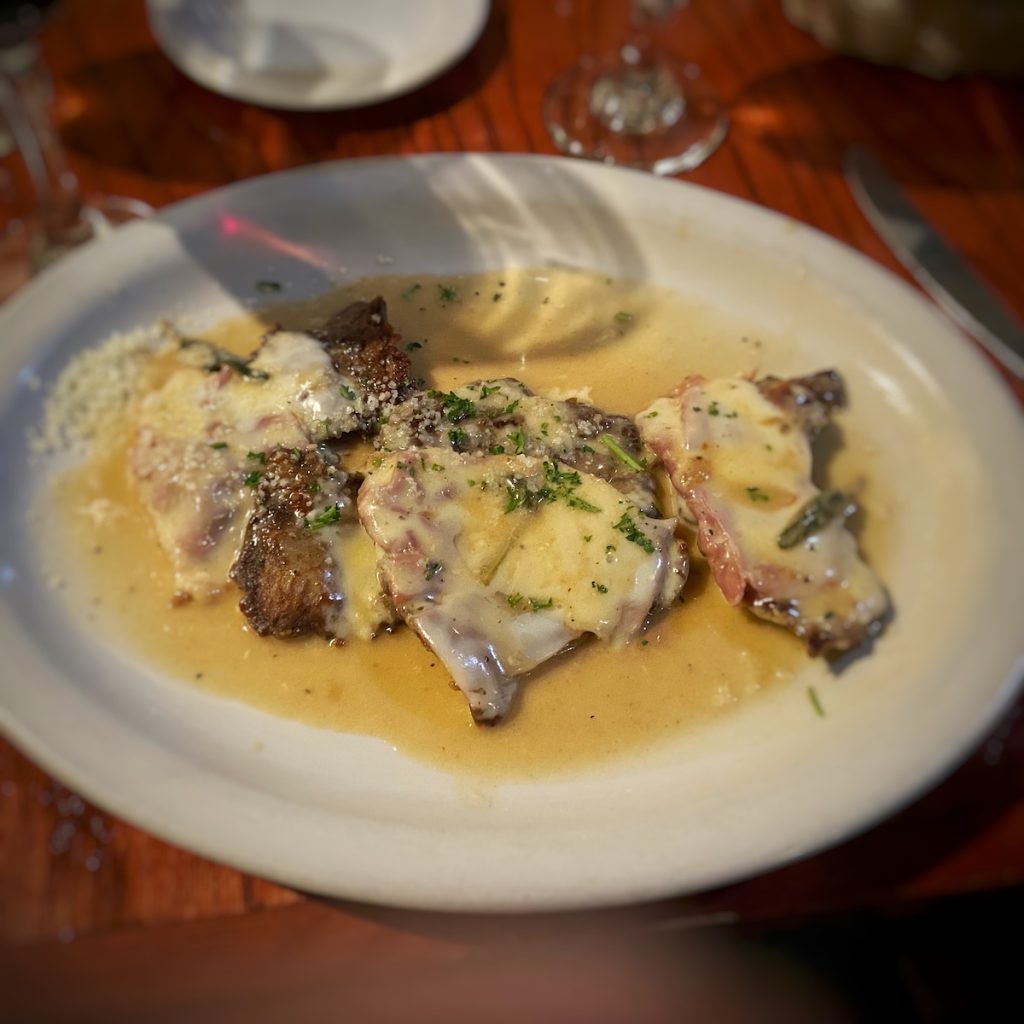
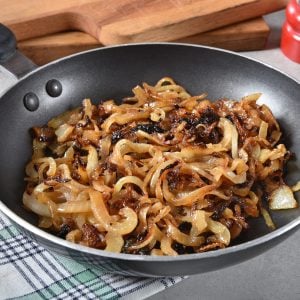

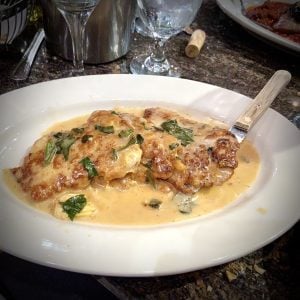

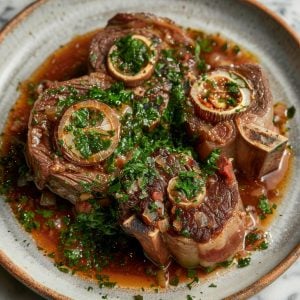

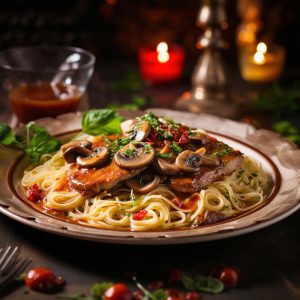





2 Responses
This is a taste explosion in your mouth. One of the best meals I have ever made. The only thing I can compare it to is a Cuban sandwich for the compexity/simplicity of taste. I paired it with garlic-olive oil pasta for a simple meal. Thank you
Sandy, you are very welcome.